It takes months of growth before your bell pepper plants will start to form their fruits. It is exciting, of course, but also tempting to pick the peppers before they are ready.
In this article, I’ll share my advice on when to pick bell peppers for the best flavor and texture in your cooking. The ideal timing will depend on your intended use, and whether you need to use them immediately.
Quick answer: Allow bell peppers to reach a full size before harvesting green. For red, yellow, or orange bell peppers, harvest as soon as they fully change color. Ripe bell peppers have a sweeter taste but have a shorter shelf life.
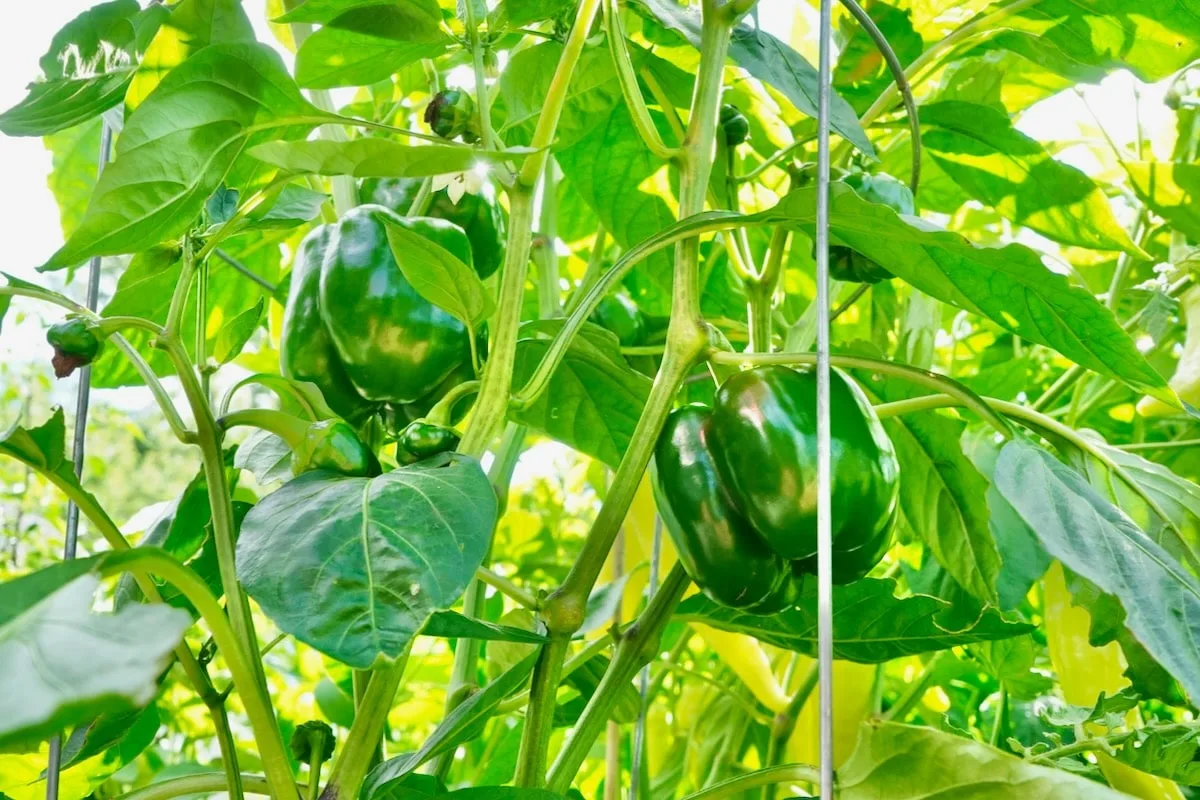
All Peppers Change Color (Even Green Bells)
Did you know that red bell peppers are simply green bell peppers that are fully ripe? There are many reasons that green peppers are used instead of red, both for flavor and practicality.
First of all, green bell peppers taste different than red bells. Green peppers tend to be less sweet, with a more earthy and vegetal flavor. After a green bell pepper ripens to red, it is much sweeter, but may also have a less crisp texture.
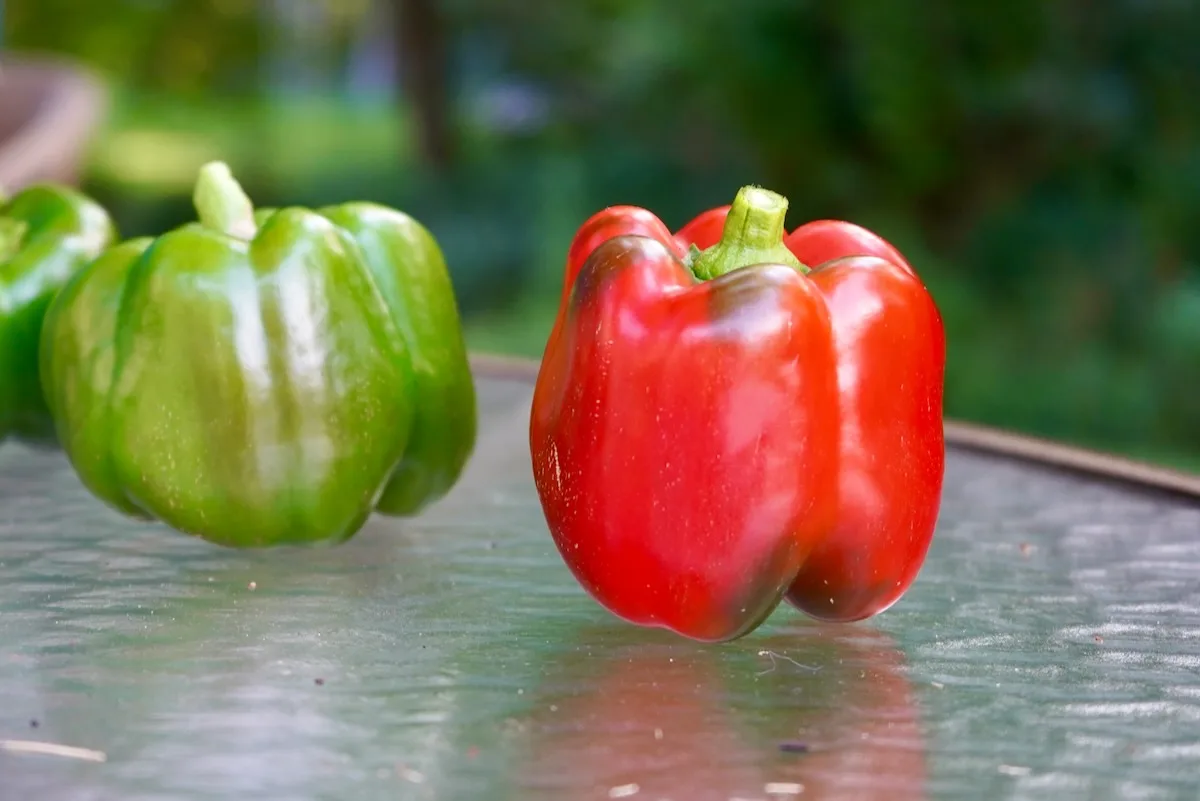
Another reason green bell peppers are sometimes favored over red is the time to harvest. For commercial purposes, it makes economical sense to harvest sooner rather than later. This is the likely reason that green bell peppers are often less expensive – they take less time to grow!
Finally, the change of color also comes with some health benefits. After ripening, red bell peppers reportedly have much more beta-carotene and vitamin C than unripe green peppers. For this reason, red, yellow and orange bell peppers are considered more nutritious than green bell peppers.
For the home gardener wondering when to pick bell peppers, it comes down to your specific needs. If you need them for tonight’s dinner and the peppers are still green, then by all means pick them!
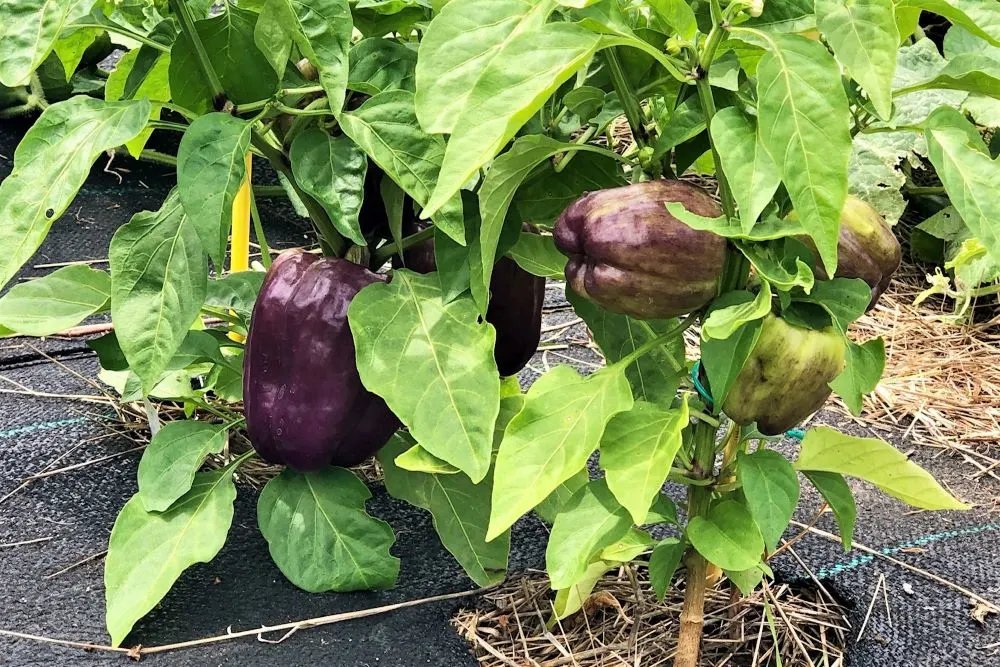
If you’d rather enjoy the health benefits and a sweeter flavor, then you’ll just have to wait for it to happen! If you pick your peppers while they are still green, there is a chance that they will continue to ripen off of the plant (more on this later).
Never Pick Bell Peppers Before They’re Fully Grown
Now that we’ve taken color into consideration, there are some other important things to think about before picking bell peppers. Most importantly, don’t pick bell peppers before they are fully grown (unless they’re damaged or diseased).
Immature peppers have many drawbacks:
- Bitter, unpleasant flavor
- Thinner flesh/walls
- Smaller overall size
- Seeds not viable
Most notably, the flavor of underdeveloped peppers is usually very bitter and unpleasant. Expecting a nice, sweet and juicy taste? Think again! Under-grown bell peppers taste more like a bitter, savory veggie than what you are used to.
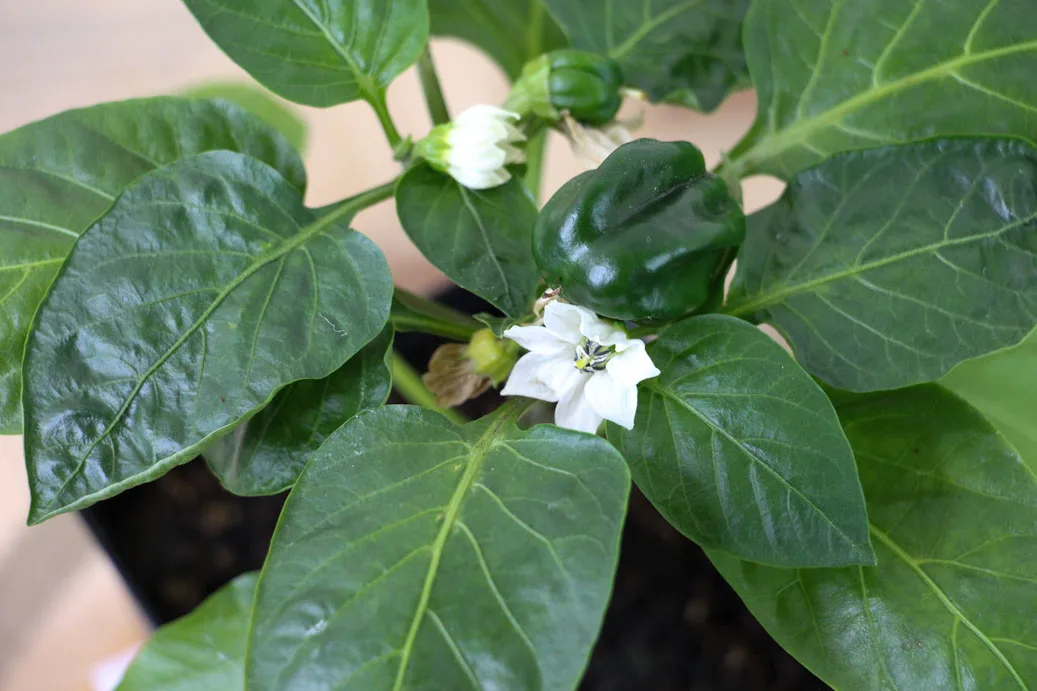
In addition to poor flavor, the walls of the pepper will be thin and weak, leading to a soft and unsatisfying crunch level. Plus, this weak structure is not ideal for holding together in your stuffed peppers.
And if you needed one more reason to wait for your bell peppers to grow to their full size, here it is: smaller peppers means…less peppers! It is obvious, but picking small peppers means you’re getting a smaller harvest from your plants. Allow the plants to finish the job before you reap your gardening rewards.
One last note – if you plan to pick your bell peppers when they are green, allow them to stay on the plant for an additional 1-2 weeks after they are done growing in size. This allows some time for the pods to develop thicker walls and better flavor.
How do I know when bell peppers are fully grown?
With that point made, how can you be sure your peppers are full-sized before picking? The easiest way to know is to check your plants regularly. Once peppers begin developing, they grow fairly quickly.
After a fruit starts forming, bell peppers typically take between 10-14 days to grow to a full size. However, this duration will vary depending on weather conditions and nutrient availability. I like to check on my pepper plants daily and note the difference in pepper pod size.
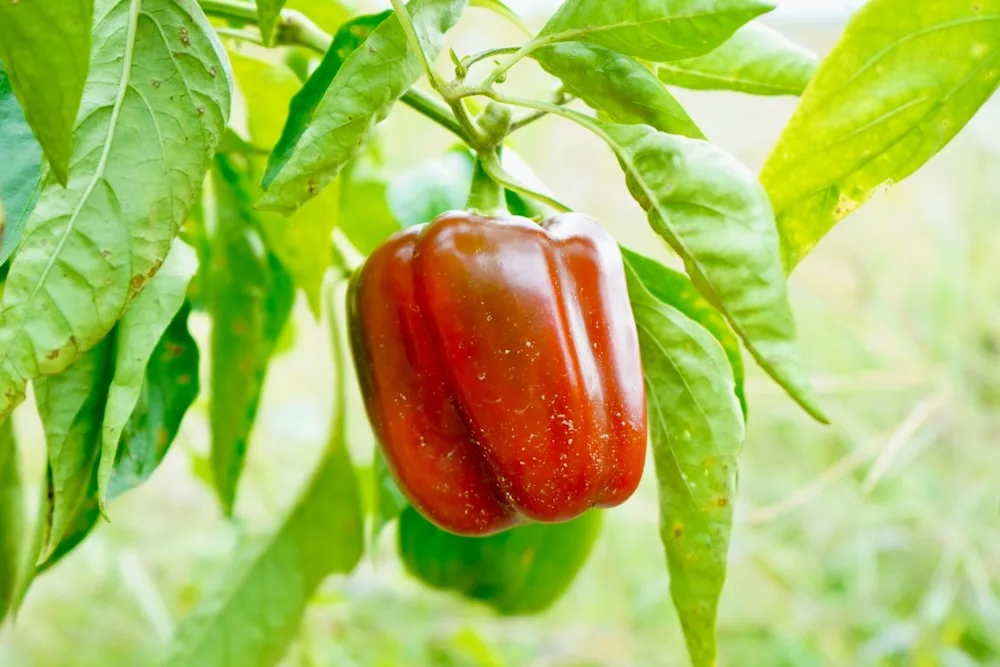
It can also be helpful to snap a picture from the same angle every time you check on your peppers. The changes in size become obvious when you have a timeline of pictures to reference.
Again, once the peppers are finished growing larger, I recommend leaving them on the plant for another week or two for the best flavor. Of course bell peppers are edible at any stage, so no need to worry if you pick them sooner.
Use Pruners to Avoid Damaging the Plant
Bell peppers have thick stems. They are some of the largest peppers out there, so harvesting can be a bit of a chore.
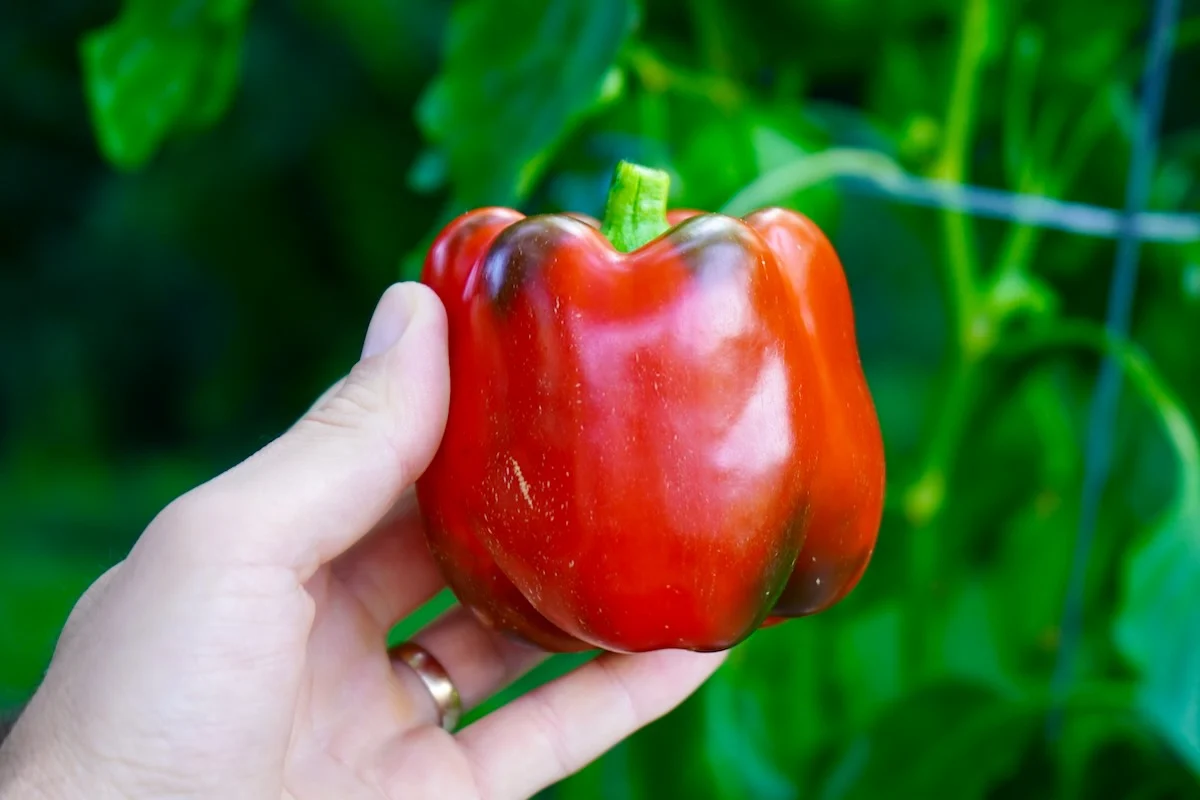
If your bell peppers are stubborn while harvesting, I recommend using a sharp, clean pair of scissors or pruning shears. This will help prevent damage to your plants and will give the peppers a nice, clean look once harvested.
Pick Immediately to Encourage More Peppers
Another tip for harvesting bell peppers is to pick as soon as you are ready to use them. Never let fully ripened peppers sit on the plant for longer than they need to.
Harvesting bell peppers triggers the plant to continue producing more fruits for you. If you pick some green bell peppers in mid-August, you may end up with a whole new set of fruits before winter arrives!
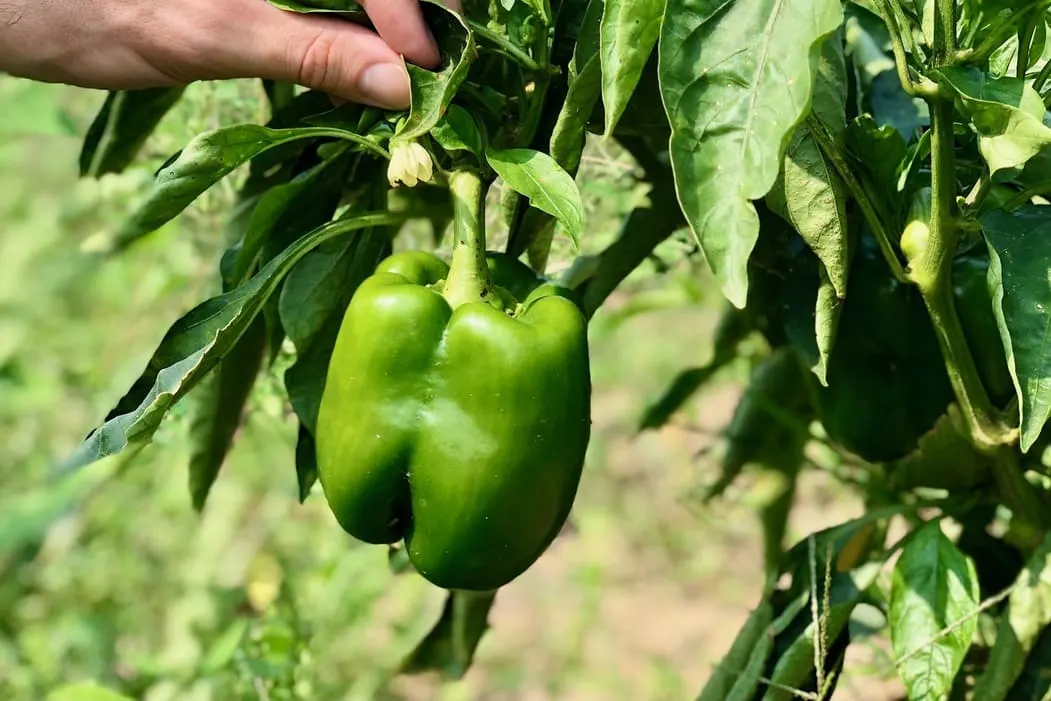
If you don’t have an immediate need for your bell peppers, but they are fully red on the plant, I still recommend picking them and preserving them. There are several easy methods for storing bell peppers for later use.
Do Green Peppers Ripen After Picking?
You may wonder whether green bell peppers will continue to ripen off of the plant. You might be in a rush to pick the peppers or have already picked them but wish to wait for them to turn red for the better flavor and increased nutrition.
In general, green bell peppers can ripen after harvest, but only if the peppers have already begun ripening while still attached to the plant. If your green peppers have a slight darkness to them, they have likely begun ripening and will continue through to a fully ripe color after being picked.
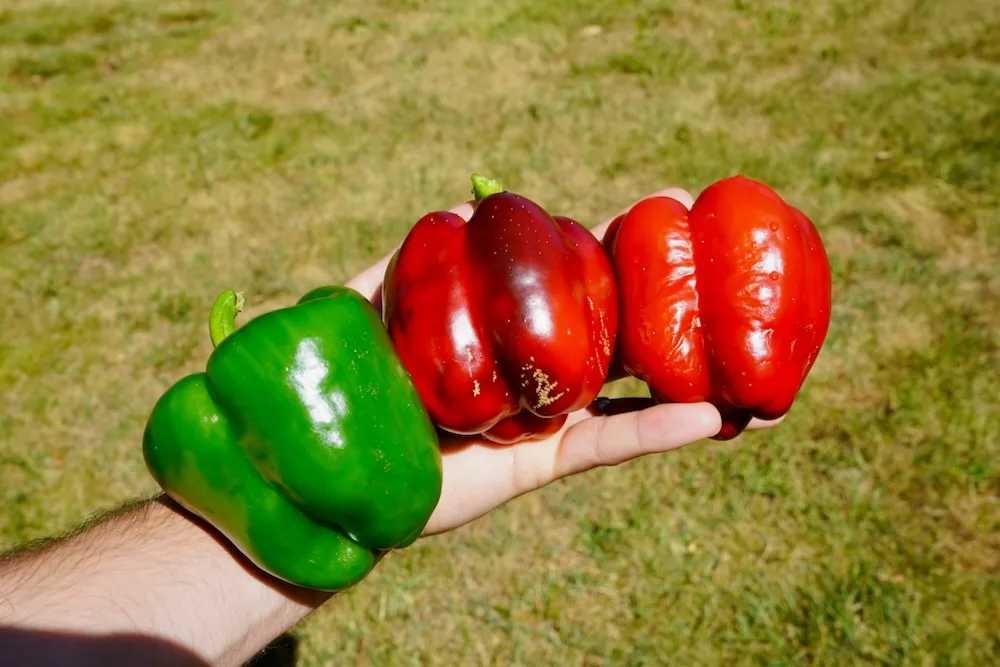
How long does it take for a bell pepper to ripen?
After the process begins, it can take anywhere from 3-7 days for a bell peppers to turn fully red (or yellow or orange). This rate of ripening shouldn’t differ much between peppers that have already been picked and those still on the plant. Keep them in a warm spot for the quickest ripening time.
Can I Save Bell Pepper Seeds?
If you intend to save the seeds within your bell peppers for planting next year, make sure that they are fully developed before harvesting.
Seeds become viable some time between the green and fully-ripened stage. However, to be on the safe side, I recommend allowing the peppers to fully change color while still on the plant.
After the peppers have ripened, I let the pods sit another few days before picking, just to be sure the seeds are done developing. Then, you can pick the pepper and harvest the seeds for storage.
What to Do With Fresh Bell Peppers
Now that you have harvested your home-grown bell peppers, what are you going to do with them?! You probably already have a plan, but just in case, here are a few ideas for what to do with your fresh bells:
- Make stuffed peppers. Bell peppers are perfect for stuffing. Their huge size can fit a ton of food, perfect for an easy home cooked family meal.
- Throw them in a salad or stir fry. Peppers compliment so many types of cuisine. Whether you are making a homemade Chinese stir fry, a pasta dish, or a side salad, freshly chopped bell peppers can only improve the meal!
- Use in hot sauces. Bell peppers are a great addition to hot sauces to tame the heat level and add flavor. Our delicious Fresno hot sauce recipe uses bell peppers for just this reason.
- Make pepper chips. If you want a healthy alternative to potato chips, replace them with your bell peppers. The thick, crunchy walls are perfect for holding loads of tasty dip. This is a scenario where I might recommend picking bell peppers while they are still green for increased crisp-ness.
- Roast them. Roasted peppers take on a different flavor profile. While this softens the peppers considerably, you can use them to add rich flavor to your cooking or sandwiches. Roasting peppers is easy to do with an oven or even an outdoor grill.
- Slice and freeze them. If you just don’t have a use for your bell peppers right away, you can always freeze them for easy use later on. Frozen bell peppers retain all of their flavor and are still a great, nutritious ingredient for cooking.
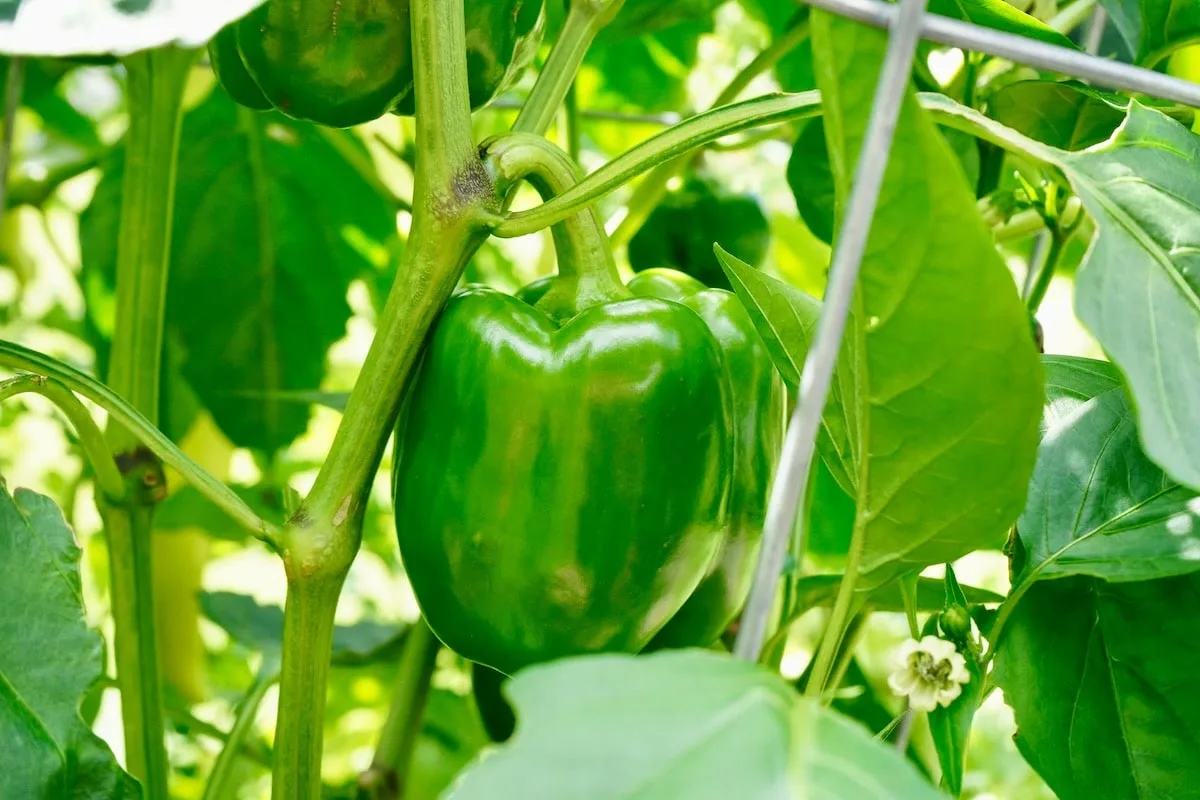
I hope this article helps you feel confident about when to pick bell peppers. Harvesting bell peppers should be nothing but exciting, so cheers to a huge harvest!
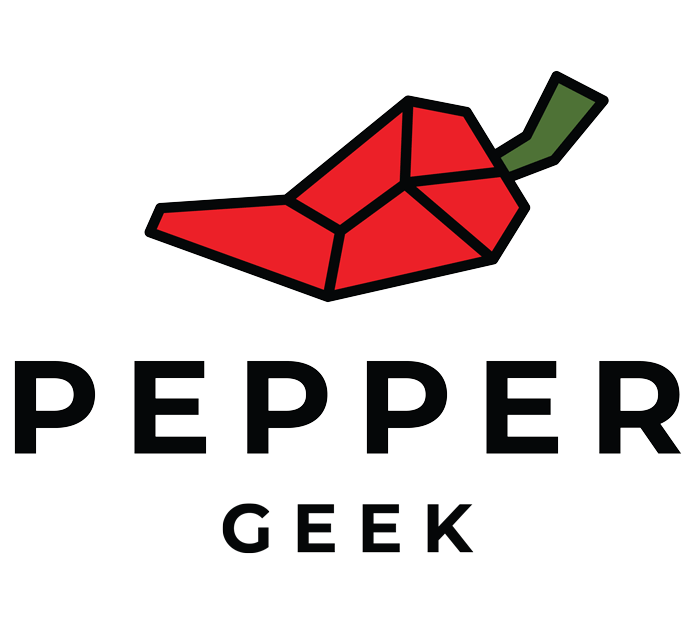

Danielle Sims
Sunday 8th of October 2023
My red and yellow pepper plants have fruit however, only one or two may be full size albeit still green. Cooler weather is here and I don't want to lose the fruit, however, it's too early to pick them. (Zone 7/8) Any suggestions at how to save what is finally growing?
Alex j
Saturday 2nd of September 2023
Hi! I have orange habaneros growing outdoors in my 7a zone. They're are and have been at full mature size for over 2 weeks I'd say and they just aren't turning any colors at all. I had a few cool nights over the past 2 weeks as well but because of this I feel although somethings been stunned and I should pick them now and leave in a sunny window inside? My redskin sweet peppers are barely turning black and some almost look like they're turning back to green and one had rotted... I haven't been overwatering btw
Chris
Thursday 5th of January 2023
Hey my bell pepper plants grew from seeds that I got from ripe bells that I bought at the grocery store and ate. Anyway my plants are close to a year old but just started producing fruit 4 months ago. They are growing pretty slow but here in San Diego they are getting plenty of sun and I am watering a few times a week at least if not more depending on the heat. Well it’s January 5th 2023 and I had to pick one for a salad and It was half the size of a regular one you buy and no seeds. How much longer should I have waited?
peppergeek
Friday 6th of January 2023
I think it may have more to do with nutrients, soil, or the size of the container you are using. We just wrote an article on small bell peppers (here) that explains the common reasons that your peppers may be smaller than you'd like. In your case, since you saved the seeds from a store bought pepper, it is possible that the seeds are unstable, but I would still expect full-sized fruit.
M
Wednesday 7th of September 2022
Excellent article and helpful
Patty
Monday 1st of August 2022
I have a potted bell pepper plant that suffered last year with infestation and did not fruit. I overwintered the plant, and this year it's flowering and producing peppers, but the peppers look like curled jalapenos. They taste like bell peppers; not complaining and just wondering if you know what causesd this change.